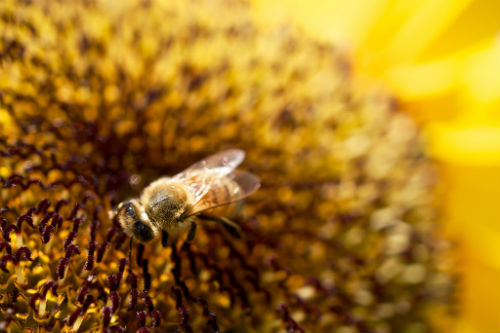One often overlooked industry for business reporters is the honey industry. Given that bees pollinate a multitude of crops that we use, including almonds, which are 100 percent reliant on honey bees, and many vegetables, we should also focus on honey, the premium product honeybees produce. This blog outlines five little-known facts to know as business reporters writing about the honey industry.
Get data on honey bee keepers
The National Honey Board, an industry-funded agriculture promotion group, estimates around 125,000 honey bee keepers exist in the United States. While most of these folks are hobbyists with around 25 hives, there are commercial beekeepers within that group who host around 300 hives each. Also, did you know the U.S. per capita consumption of honey is around 1.3 pounds a year? Or that the annual consumption of honey in America is around 450 million pounds? For robust news and features on honey, tap organizations like the National Honey Board and your local Department of Agriculture for more information on honey (and bee keeping) in your region.
Identify honey hot spots
The same trade group notes certain parts of America remain more attractive to beekeeping. While every state in America produces honey, the following five states produced the most, according to the most recent (2013) Department of Agriculture data:
- North Dakota
- Montana
- South Dakota
- Florida
- California
Honey isn’t just food
When the average reader thinks of honey, they think of the liquid stuff they spread on toast; however, a broad range of products also generate from honey including:
- Beeswax
- Candles
- Soap
- Premium watercolor paints in which honey improves the luminosity
- Premium skincare products like lotions, facial care and soaps
Growing numbers of foodies also use honey into a range of foods including salad dressings, marinades and smoothies.
Crops dependent on honey
Earlier we mentioned the almond crop relies entirely on honey bee pollination, but numerous other crops also rely on honeybees. They include:
- apples
- avocados
- blueberries
- cranberries
- sunflowers
- kiwi fruit
- melons
- vegetables
For added context to any business feature on honey, ensure your reader understands what’s at stake and why they should care by highlighting the connection between honey bees and other food sources.
Look for trends in honey importing
In spite of the abundance of honey in America, honey imports are on the rise. In fact, the National Honey Board estimates we import between two-thirds and three-quarters of the honey Americans consume each year, according to 2014 Department of Agriculture figures. Ask your local honey makers how they’re coping with this trend. Through your reporting, consider the following:
- Which countries remain the most popular sources for imports?
- Why do consumers seek exported honeys vs. local?
- How do the flavors differ between local and European honeys, for instance?
- Do the health benefits diminish when buying exported honey versus locally made products? (Honey can help soothe irritated throats during colds, contains antioxidants and can reduce ulcers and gastro- intestinal disorders, experts say.)
- Fair-trade-certified honey is taking off in the U.S. What does this trend mean to U.S. markets?
Also note larger, more ominous problems such as bee colony collapse and how this impacts the honey industry. The Huffington Post reports data from BeeInformed, a research group funded by the U.S. Department of Agriculture that states that colonies in backyard and commercial settings have endured an average winter loss of 28.6 percent.
Also, the industry also sees growing instances of honey fraud, i.e. producers falsely declaring honey as originating from one source, like Vietnam, to avoid U.S. custom officers dumping honey that actually comes from China. Since 2001, the U.S. Commerce Department has imposed a hefty tariff on Chinese honey because experts within the U.S. honey industry showed China was selling honey to the U.S. below the cost of their own production. U.S. Immigration and Customs Enforcement reported such a case involving 60 tons of illegally imported honey from China in late June.











